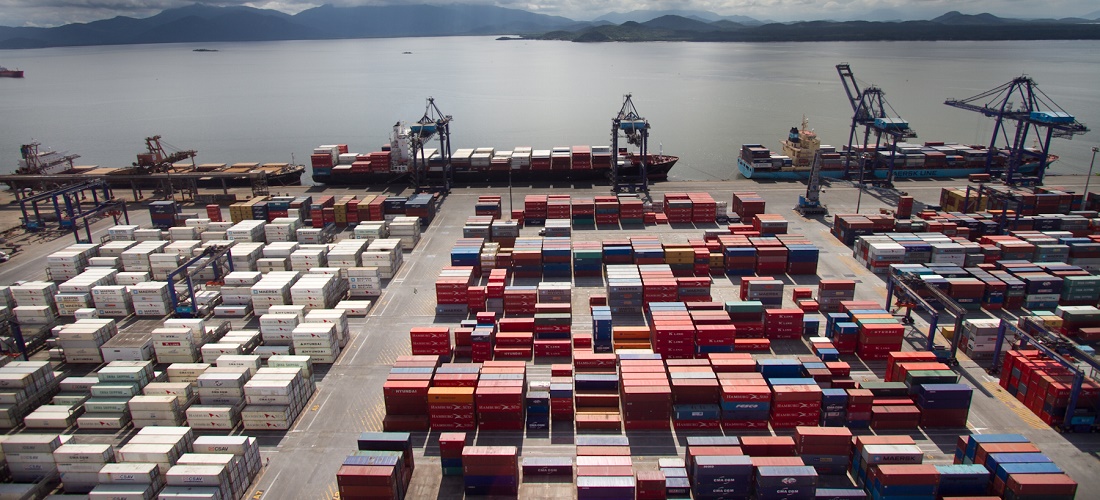
Brazilian industries suffer from shipping chaos
Mar, 23, 2021 Posted by Ruth HollardWeek 202113
In addition to the increase in internal costs from rising inflation and commodities, Brazilian industries have been facing difficulties in transporting inputs and goods due to the disruption in global supply chains.
After the global industry shutdown in the first half of 2020 caused by the coronavirus pandemic, there was a huge breakdown in global logistics: sea routes were interrupted and ships and containers were scattered around the world. After the reopening, reorganization efforts were overrun by the growing demand for goods, medicine, and hospital equipment.
In November, for example, container handling in Shanghai, one of the main cargo handling points in the world, broke the all-time record of 42 million TEU handled.
As demand increased, costs exploded; in January, freight from China to the port of Santos set a new record, reaching US$ 9,000 per 40-foot container, almost five times the normal fare.
Users of this type of service say that in addition to the high price, they live with ship delays and changes in port calls, which make it difficult to plan production.
According to Luiz Carols Moraes, President of ANFAVEA (the national association of motor vehicle manufacturers), “the disruption of the production chain” puts operations at risk. “The automobile sector is most impacted because it is within a global chain,” he said. “The risk of interruptions [at automakers] remains a permanent risk in our sector until the global production chain adjusts.”
The problem began to be felt more intensely in the fourth quarter of 2020. Santos Brasil, the operator of a terminal in Santos, recorded a 4.4% increase in container movements in the period, closing the year at a higher volume than that seen before the pandemic.
In January 2021, the port of Santos broke its prior handling record for both general cargo and container cargo. The port reached 338,500 TEU, an increase of 10.5% compared to January 2020 when the previous record was set.
“We are experiencing a great deal of stress in the logistics channels,” said the company’s president, Antônio Carlos Sepúlveda, in a teleconference to talk about the company’s results in 2020.
The textile industry is another that has been experiencing impacts. “[The problem] increases the costs of imported products that make up our matrix of inputs”, says Fernando Pimentel, President of ABIT (the Brazilian textile industry association).
On the export front, experts see difficulties mainly in sales of frozen meat, given the limited availability of refrigerated containers. For BRF, the scenario is treated as a “comma” in the recovery process. “What problems do we have? China’s growth is very strong and they end up using containers that are on their way to us, for their own exports,” said the company’s VP of International Markets, Patrício Rohner, in a conference call with analysts.
“The impact is being felt stronger now ever since the reopening of markets and the current wave of refueling have resulted in an abrupt increase in container flows,” says ABIMAQ (the Brazilian machinery and equipment industry association).
For the entity, the biggest difficulty is to find containers for shipments of products to Asia, since shipowners would prefer to return with empty equipment to meet the sales demand of that region and to recover the losses taken during the first lockdown.
The president of AEB (Brazilian foreign trade association), José Augusto de Castro, says that exports have not been seriously affected, since the country sells more commodities that are transported in bulk carriers.
But 85% of Brazil’s imports are manufactured products. “There has to be a container ship and the shipowners only come to Brazil today if they can fill the ship,” he says. “And since Brazil exports few manufactured goods, it is almost certain that any ship arriving in Brazil will return empty.”
In addition to the problems for those who depend on inputs and components, he sees impacts on the final price of goods, pressured by high freight rates. “Only time will tell when this will return to normal and, until then, we will have to live with very high prices for some products.”
The crisis caught Brazil at a time of growth in container movements: according to a study by the CNI (national confederation of industry), export tonnage for this type of cargo increased 48% between 2010 and 2020.
CNI logistics specialist, Matheus Castro, says that long-haul freight has already begun showing signs of relief in March, but the problem is far from being solved. “Experts argue that it will take a while for the market to adapt and return to normal,” he says. “The terminals in the United States and Europe today are experiencing long delays in cargo handling, with lines of ships waiting their turn in line.” “Navigation is globalized and the shipowner puts the ship where the market is strongest”, says Luis Resano, Executive Director of ABAC (Brazilian association of coastal shipowners). “When [the ship] is owned by a Brazilian company, it is built to be dedicated to this market, and it is not worth leaving.”
The following graph illustrates the trade imbalance between container imports and exports that contributed to the current logistical problems:
Trade Imbalance | Jan 2019 to Jan 2021 | TEU
Graph source: DataLiner (To request a DataLiner demo click here)
Source: Valor
-
Coffee
Aug, 18, 2023
0
Ag minister grants BRL 6.3 billion for coffee industry in Brazil
-
Ports and Terminals
Aug, 04, 2022
0
Brazilian Supreme Court studies a possible THC2 comeback
-
Economy
Sep, 17, 2020
0
GOVERNMENT ZEROES IMPORT TAX ON COVID-19 VACCINES
-
Ports and Terminals
Dec, 22, 2020
0
Santos Port Authority receives first bids for transitional contracts



